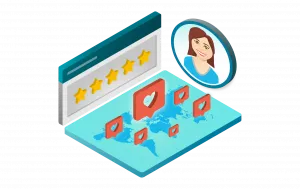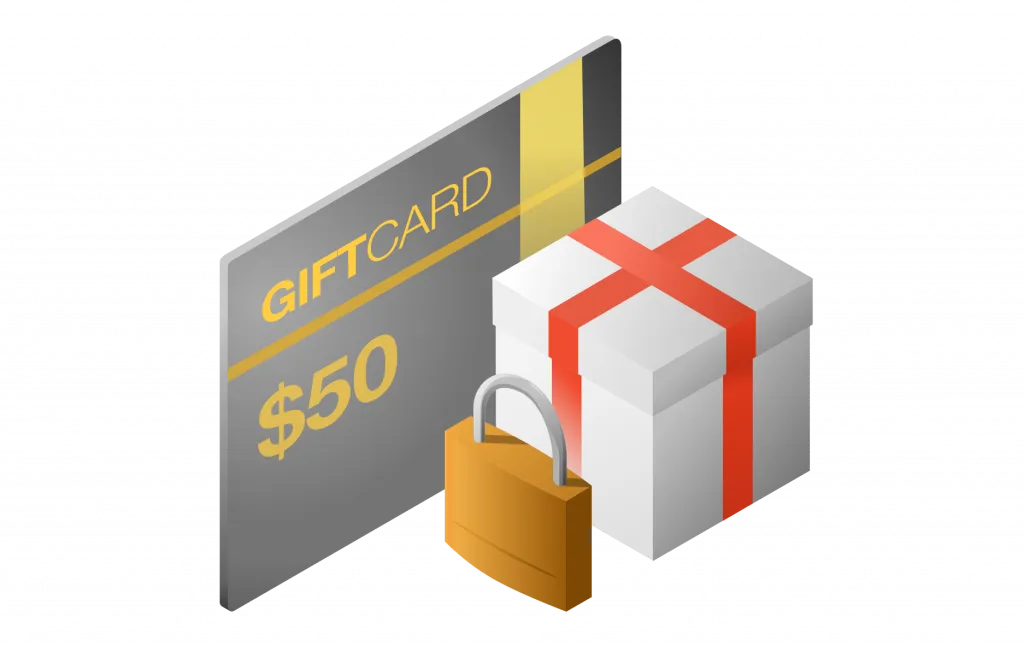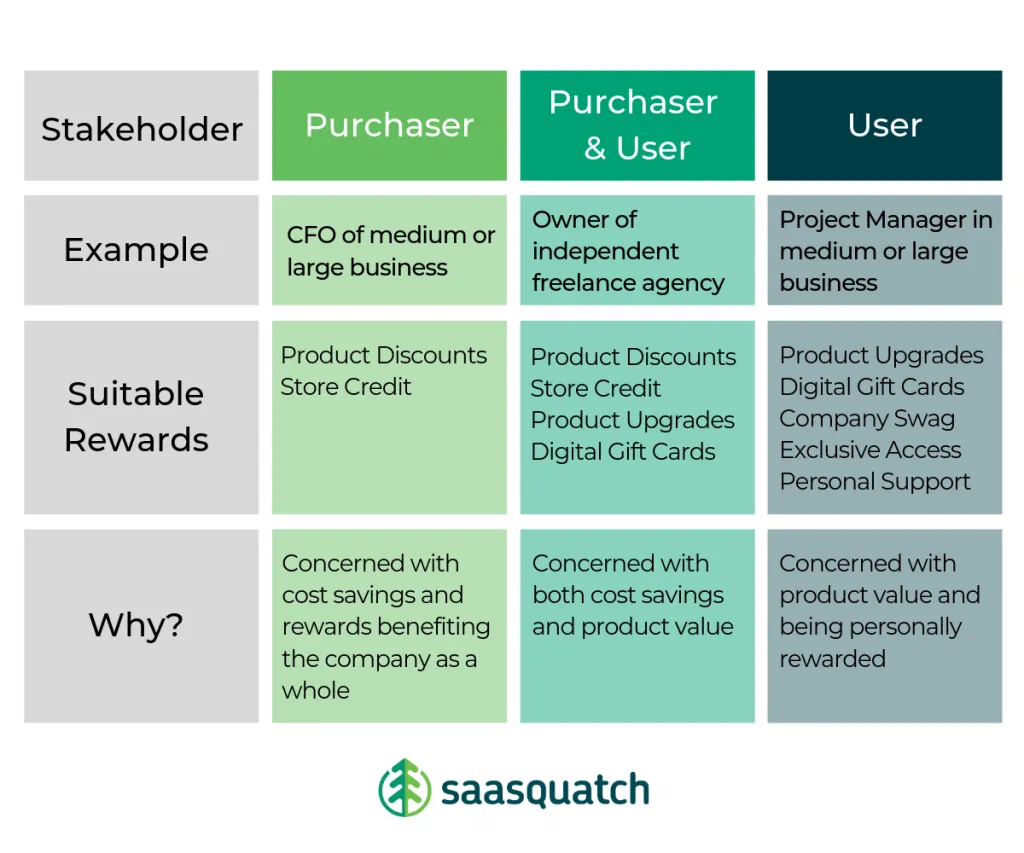B2B Loyalty Programs: What rewards perform best
As a business operating in the B2B market, longer sales cycles and higher customer acquisition costs highlight the importance of using referral marketing to increase retention and reduce churn.
But when your business model is fundamentally different than that of a B2C company, your loyalty and referral program rewards can’t rely on a typical B2C strategy.
Dealing with other businesses means you’re rewarding people who have different mindsets and goals than an individual customer.
When your client is ultimately a collection of people, how do you identify and incentivize the right stakeholders?
In this post, we uncover why you need to think about B2B referral and loyalty rewards differently, and why recycling a B2C strategy won’t always deliver optimal results.
Let’s take a quick moment to clarify:
- Business-to-Consumer (B2C): A business that sells its product/service to individual customers.
- Business-to-Business (B2B): A business that sells its product/service to other businesses, who then have their own customers.
How does being a B2B business affect the rewards you offer?
In both the B2C and B2B realms, you’re ultimately selling to a person, or a group of people.
But strong differences in motivation arise when we consider if the buyer is the actual user of your product or service, or a financial decision-maker, or both.
Here's an overview of how we'll be differentiating these three stakeholders throughout this article (download a copy of this chart here):
When your client is a business entity, multiple people control its operations. When selecting rewards for your B2B loyalty or referral program, you need to first identify the stakeholder(s) at that company who will be the most influential in deciding whether to keep doing business with you.
Hint: This is not always, or only, the person paying the bill.

Your focus is best steered by who you identify as the individual or group of people engaging with your product on a daily basis.
A common misconception is that discounts and cost savings will motivate anyone, but not all rewards are seen as equal when driving action from business entities.
Understanding who you need to incentivize is vital when you realize that a 2% increase in customer retention has the same effect as decreasing costs by 10% (source).
Understanding who to incentivize
As a company, your typical B2B arrangement involves interacting with representatives from another company’s department, such as marketing, procurement or product managers.
For example, let’s say your company sells project management software that is used by product teams in medium to large-sized companies.
Who engages with your product on a daily basis?
The members of a company’s product team engage with your software on a daily basis to stay organized and meet deadlines.
What do they care about?
These employees value tools like your software that make their job easier by automating processes and providing insightful data.
If they see value in your product, they advocate to upper management to keep paying for the subscription using the company’s financial resources.
What do they not care about?
The members of the product team represent a small segment of the company’s employees.
They do not care about the bill. They are not responsible for paying for your software or other tools they use, nor are they involved in planning the company’s budget or controlling spending.
What does this mean?
The distinction to make is that the user and purchaser of your product are often two extremely separate people when you’re selling to a business, which calls for different driving factors when motivating specific actions.
Using the same example as above, the average product team member of a larger company is not concerned about the bill. They are not likely to be motivated by cost savings or a discount if you ask them to make a referral or take a demo of a new feature, because this reward only benefits the company’s bottom line and delivers no personal value for the user.
The product team member would be much more enticed with a digital gift card or free swag to feel like their individual time and effort is being adequately rewarded. Gift cards give the user the freedom of choice, while wearing your swag helps them feel like they are a part of your brand.
Other great examples are free product upgrades and exclusive access because they enhance the user’s experience with your product.

The overall goal in choosing your rewards is to ensure the users of your product see added value in remaining a customer.
In a corporation, while the user may not be cost-conscious, they are your brand champions when it comes to convincing upper management to renew the subscription.
This becomes important when realizing that reducing churn by as little as 5% can increase profitability by 20% to 125% (source).
When B2C reward strategies work in a B2B environment
The larger the business you’re selling to, the less effective a B2C rewards strategy will be.
This also means that if you’re dealing with small businesses, classic B2C strategies can be successful.
Why? The owners of the business are likely also the users of your product.
The stakeholder you are trying to influence with rewards is now both the user and a financial decision maker. Discounts and credit are likely to excite them because they will personally benefit from the savings, and they can also see value in gift cards or free features.
This business-to-small-business relationship therefore mimics that of B2C, representing the situation where classic purchaser-focused strategies can be leveraged.
Tying it all together
We can now distinguish three main types of stakeholders in a corporation and what they value as a reward:
- User: someone who engages with your product or service but does not pay for it
- Purchaser: someone who pays for your product or service, does not use it for the intended purpose
- Purchaser and User combined: someone who is both responsible for buying and using your service
Download a copy of this chart here!
Wrapping Up
The overall goal of any loyalty or referral program is to offer rewards that your end-users perceive as valuable.
Because a B2B company functions differently than a B2C in many ways, its loyalty program rewards require different considerations.
It’s crucial to understand that operating in the B2B market means engaging with a collection of people with varying roles and needs, instead of a single user.
This helps you paint a clear picture of who your end-users actually are, which ones you are trying to motivate, and what they value given their position and responsibilities within their company.
Check out our blog for more information on choosing the right rewards.
To learn more about designing a successful loyalty strategy in the digital economy, sign up for the Digital Loyalty Academy today. Free access for the first 700 students.

